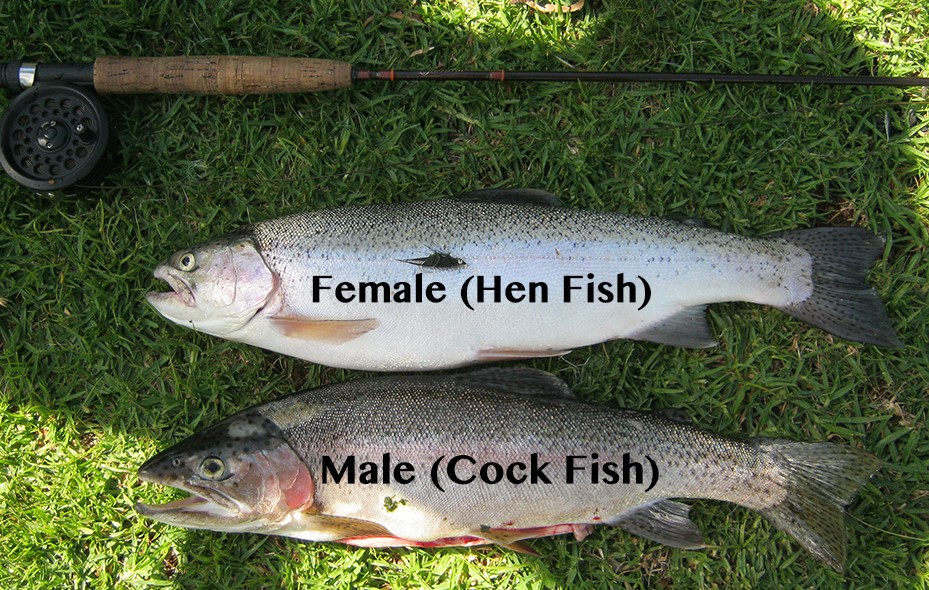 What sex was the last limit of fish that you caught? Were they boys, girls, or …?
What sex was the last limit of fish that you caught? Were they boys, girls, or …?
How can you identify your fish as a male or female? It’s not as easy as you think. In the mammal world, we also struggle with what is a male or female. Behaviors, mutations, and genetics make sexual identification a challenge.
There are no real nicknames for a boy or girl fish. I have heard male perch or shad being called” bucks”. I have also heard female fish being called “She-fish”. In Europe, female fish are often called “Hens” and males “Cocks”. It can also be difficult to Identify the fish’s sex if it is young, immature, or changing.
For many fish there are a few basic ways you can figure out sex.
Shape Male fish tend to be more torpedo shaped. Females are rounder and fuller. They also tend to grow larger.
Fins Males tend to have bigger and wider fins. Males also have larger anal fins that have a pronounced point.
Behavior Males are more aggressive. Females are more lethargic. Males tend to be easier to catch!
Color Males tend to be more colorful, especially during the spawn.
Kype/Jaw Transformation of males happen during spawning. The lower jaw becomes elongated and hooked.
Nuchal Bump Some males also have a large bump behind and above their eyes.
Now things get confusing. About two % of the fish world are Hermaphrodites. This means that they are both male and female and can also change sexes. We call these fish Unisex.
Unisex fish are both male and female at the same time.
Synchronous Hermaphrodites Produce both sperm and egg simultaneously. Are both sexes but need another fish to spawn.
Sequential Hermaphrodites Can only produce sperm or egg at one time. Need another fish to spawn.
Protogynous Hermaphrodites Start life as a female then become a male.
There are also fish that have no sex organs until later in life. These eunuchs become whatever sex is needed for the school. They will then become what is needed. If there are too few males or females, they will fill the niche. Halibut is an example of this fish. Most large halibuts are females after growing to become a few hundred pounds.
Hybrid fish are often Mules that cannot reproduce at tall. Some hatchery fish species are bred to have no sex and instead grow very fast and big. These fish, that are unable to spawn, grow faster and if they are unwanted, can be controlled by denying future stocking. Some fish genetics may result in a “whoops fish” that have other issues. A Blue Trout is a genetic mistake that has a bad liver disorder. The trout is unable to spawn and spread the mutation condition. Nature knows best.
She or He is sure a Biggun!?
Montana Grant





